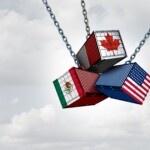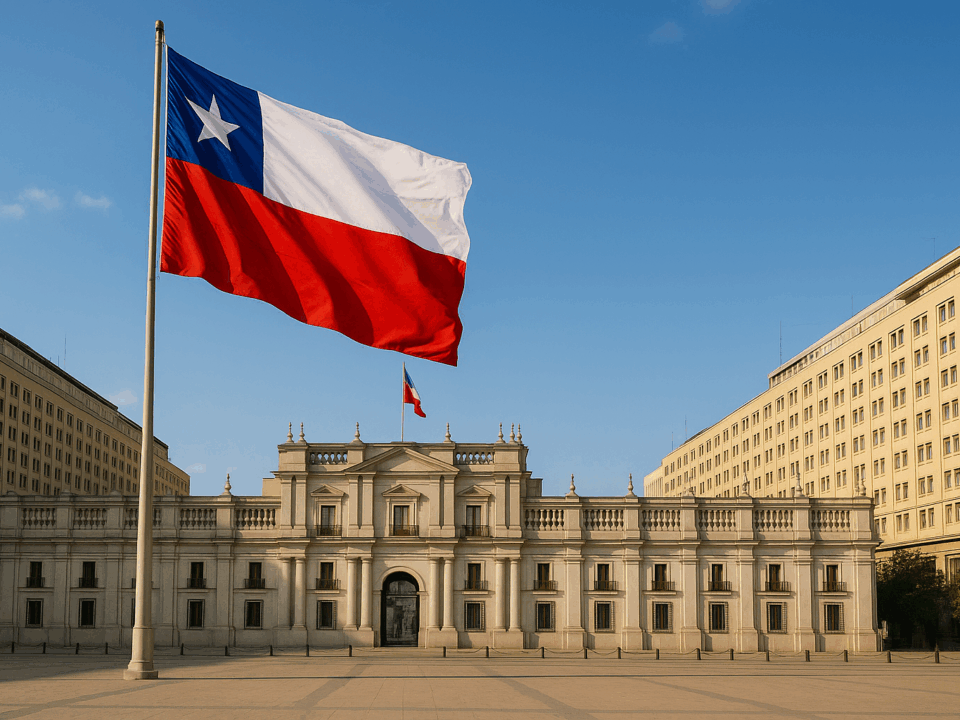
The Tariff Wars Have Started. Now What?
March 4, 2025
Five Things DOGE Could Learn from Internal Auditors
March 23, 2025Donald Trump intended to follow through with the America First Trade Policy issued on January 20, 2025. The policy instructed the Secretary of Commerce, in consultation with the Secretary of the Treasury and the U.S. Trade Representative, to investigate the causes of the annual trade deficits and recommend measures like a global supplemental tariff to address them. The preparations for a global trade war had begun, and recent U.S. tariff proposals have been nothing short of “shock and awe.”
Ultimately, however, “shock and awe” has often led to “shock and confusion” when it comes to U.S. tariff policy. Consider that in less than 8 weeks, the following has happened:
- January 20: Trump announces 25% tariffs on Canada and Mexico by February 1.
- January 29: Canadian officials visit Washington to negotiate against the tariffs.
- February 1: Trump signs an order imposing 25% tariffs on Canadian and Mexican goods, with a 10% levy on Canadian energy imports.
- February 2: Canada responds with $30 billion in retaliatory tariffs on U.S. goods, effective simultaneously with U.S. tariffs.
- February 3: Trump suspends tariffs for 30 days after agreements on border security with Canada and Mexico.
- February 13: Trump announces 25% tariffs on all foreign steel and aluminum imports starting March 12.
- February 21: Trump signs a memo to impose tariffs on countries taxing U.S. tech companies.
- March 4: Trump’s tariffs on Canada and Mexico take effect.
- March 5: The White House exempts Ford, Stellantis, and GM from tariffs until April 2.
- March 6: Trump amends orders exempting CUSMA-compliant trade with Canada and Mexico.
- March 7, 2025: Trump announces new tariffs on Canadian dairy and lumber.
- March 9: Trump suggests tariffs may increase after April 2.
- March 10: Ontario imposes a 25% export tax on electricity to U.S. states in retaliation.
- March 11: Trump threatens to raise steel and aluminum tariffs to 50%; Ontario suspends its export tax.
- March 12: Trump’s steel and aluminum tariffs begin; Canada retaliates with $29.8 billion in counter-tariffs.
For the past two months, I have been emphasizing to internal auditors and risk managers that tariffs pose significant risks to many businesses. Managing tariff risks amid the volatility and uncertainty observed recently is challenging. This emerging global tariff war is creating what military tacticians have long described as the “fog of war” phenomenon.
The concept of the fog of war was first introduced by Prussian military analyst Carl von Clausewitz in 1832. The term is often used to describe the uncertainty in situational awareness experienced by individuals involved in military operations. It aims to capture the unpredictability related to one’s own capabilities, the adversaries’ capabilities, and the intentions of adversaries during engagements, operations, or campaigns.
The fog of tariff wars resembles traditional wars in several ways:
- Uncertainty and Misinformation: Both create confusion, making it hard to predict trade policies and economic impacts.
- Unintended Consequences: Miscalculations lead to supply chain disruptions and price volatility, with some industries suffering while others benefit.
- Escalation and Retaliation: Misreading strategies can cause tit-for-tat actions that harm both sides economically.
- Decision-Making Under Pressure: Like military leaders, policymakers must adapt with limited information, adjusting supply chains and pricing.
- Long-Term Consequences: Both reshape geopolitical and economic landscapes for years, affecting global trade and alliances.
To navigate the fog of tariff wars, companies should prioritize scenario risk management. This involves analyzing and preparing for various potential future scenarios, rather than focusing solely on past risks. By considering both positive and negative plausible situations, companies can better assess their potential impacts.
Scenario risk management is crucial for businesses facing tariff wars. By anticipating outcomes and preparing responses, companies can reduce risks and capitalize on opportunities. Here are some ways to apply scenario risk management:
1. Identify Key Risk Drivers: Companies should assess the primary factors that influence tariff wars, including:
- Political and diplomatic tensions (e.g., U.S.-China relations)
- Trade agreements and retaliatory tariffs
- Supply chain vulnerabilities
- Industry-specific exposure to tariffs
- Currency fluctuations and inflationary pressures
By understanding these drivers, businesses can better frame potential scenarios.
2. Develop Multiple Scenarios (and sub-scenarios): Businesses should outline various tariff war scenarios, considering variables such as:
- Best-Case Scenario: Tariff reductions or trade agreements ease tensions.
- Most Likely Scenario: Ongoing tariff volatility with periodic negotiations.
- Worst-Case Scenario: Full-scale trade war with severe tariff increases and supply chain disruptions.
Each scenario (and sub-scenario) should incorporate potential government actions, market reactions, and cost implications.
3. Quantify Financial & Operational Impact: For each scenario, businesses should analyze:
- Cost increases due to tariffs on raw materials or finished goods.
- Impact on supplier contracts and production costs.
- Changes in customer demand and pricing power.
- Potential need for alternative sourcing or reshoring.
- Regulatory and compliance risks in different regions.
Financial models can help quantify these impacts and assess resilience.
4. Develop Contingency Plans: To mitigate risks, businesses should prepare strategies such as:
- Diversifying Suppliers: Reducing reliance on countries subject to high tariffs.
- Reshoring or Nearshoring: Relocating production to tariff-friendly regions.
- Adjusting Pricing Strategies: Passing costs to customers or absorbing them strategically.
- Exploring Trade Exemptions: Applying for exclusions or leveraging free trade agreements.
- Currency & Hedging Strategies: Managing exposure to forex fluctuations.
These proactive measures enable businesses to remain agile regardless of how the tariff war evolves.
5. Monitor & Adapt in Real-Time:
- Establish a tariff risk monitoring team to track policy changes.
- Use AI and data analytics to assess supply chain vulnerabilities.
- Maintain flexible contracts to adjust sourcing and logistics promptly.
- Engage in government relations to influence trade policy discussions.
6. Leverage Competitive Advantages:
- Identify markets where competitors are more vulnerable to tariffs.
- Invest in automation or technology to offset cost increases.
- Strengthen customer relationships through transparent communication on pricing strategies.
Tariff wars, like any geopolitical uncertainty, require agility, foresight, and strategic planning. By applying scenario risk management, businesses can not only mitigate risks but also capitalize on emerging opportunities in a shifting global trade landscape.
An excellent resource to better understand the current tariff environment and it’s potential impact can be found in the whitepaper, “Managing Import and Trade Risks During a Trade War”, published by Foley and Lardner, LLP.
I welcome your thoughts on the looming trade wars, and how you’re preparing to help your organization to endure the inevitable tsunami of risks.






I welcome your comments via LinkedIn or Twitter (@rfchambers).